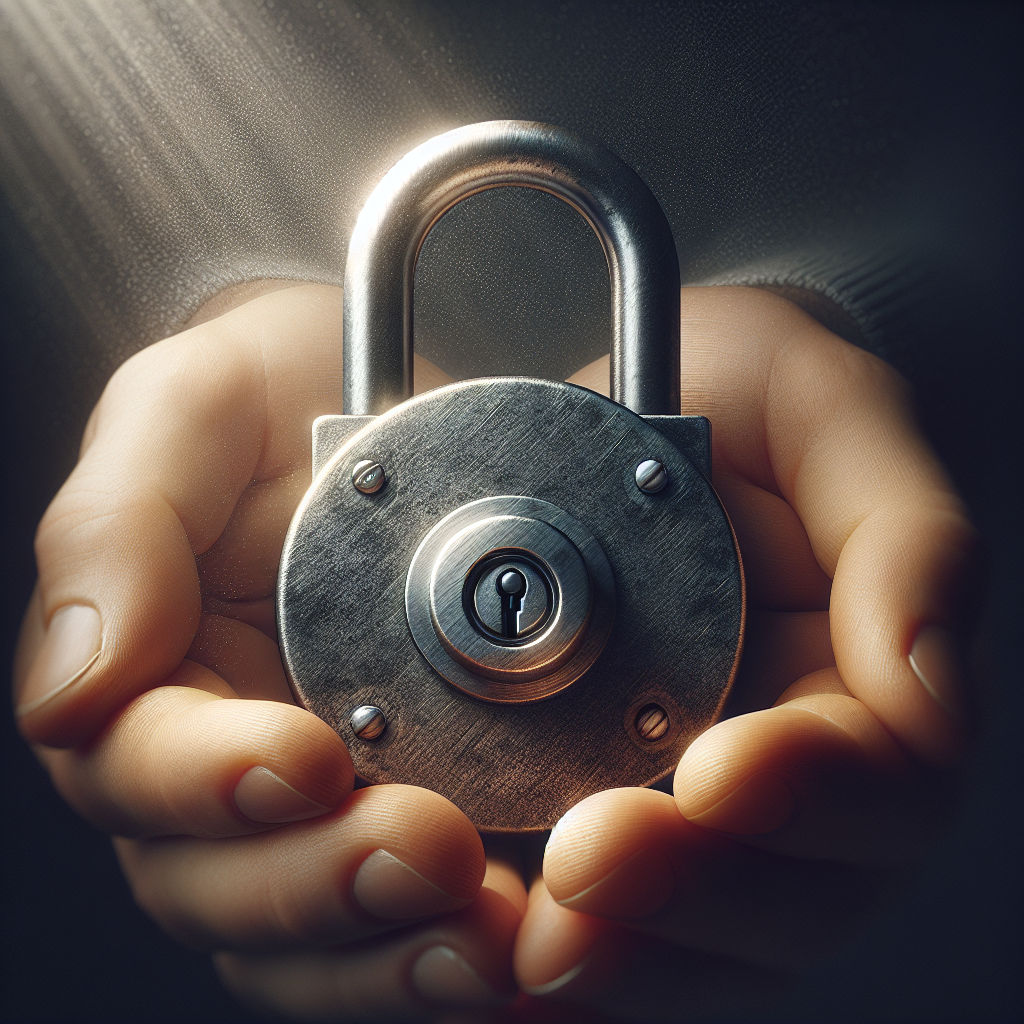In today’s fast-paced world, it is becoming increasingly important to prioritize self-protection and safeguarding our personal space. With countless interactions and constant connectivity, it can be challenging to establish boundaries and ensure our own well-being. This article explores effective strategies and practical tips to help you navigate and protect your personal space, empowering you to take control and prioritize your mental and emotional health.
Understanding Personal Space
Definition of Personal Space
Personal space refers to the physical and emotional boundaries that individuals maintain around themselves to feel comfortable and secure. It is the invisible area surrounding a person, and its size can vary across cultures and individuals. Personal space is not only about physical distance but also about emotional and psychological boundaries that individuals establish to protect their well-being and maintain a sense of autonomy.
Importance of Personal Space
Respecting personal space is vital for establishing healthy relationships, promoting wellbeing, and ensuring mutual respect and understanding. When personal space is invaded or disregarded, individuals may feel threatened, uncomfortable, or violated, potentially leading to emotional distress and strained relationships. By acknowledging and honoring personal space, we can create a safe and comfortable environment for ourselves and others, fostering positive interactions and maintaining healthy boundaries.
Factors Influencing Personal Space
Several factors can influence an individual’s personal space, including cultural norms, personal experiences, and individual preferences. Cultural differences play a significant role, as some cultures may have smaller personal space bubbles, while others may have larger ones. Personal experiences, such as past traumatic events or instances of boundary violations, can also influence the size of an individual’s personal space. Additionally, introverted individuals often prefer more personal space than extroverted individuals. Understanding these factors can help foster a greater appreciation for individual differences and promote a culture of respect for personal space.
Recognizing Boundaries
Physical Boundaries
Physical boundaries refer to the space surrounding your body, and respecting these boundaries is essential for establishing healthy relationships and avoiding discomfort. It is crucial to be mindful of your own physical boundaries and respect the physical boundaries of others, whether you are in a public space or engaging in more intimate settings. By maintaining appropriate physical distance and avoiding unwanted touch, you can communicate respect and build trust with those around you.
Emotional Boundaries
Emotional boundaries are equally important for maintaining healthy relationships and protecting your mental and emotional wellbeing. Emotional boundaries involve recognizing and communicating your feelings, desires, and limits while respecting the feelings and boundaries of others. It is essential to be aware of your emotional limits, communicate them assertively, and refrain from pressuring or manipulating others to violate their own emotional boundaries. By honoring and respecting emotional boundaries, you can foster stronger, more authentic connections with others.
Digital Boundaries
In an increasingly digital world, it is crucial to establish and maintain boundaries in our online interactions. Digital boundaries involve protecting one’s personal information, limiting online exposure, and maintaining privacy online. This includes being cautious about sharing sensitive information and ensuring the security of our online accounts. Taking steps to protect our digital boundaries helps prevent identity theft, cyberbullying, and other potential online threats.

Developing Awareness
Recognizing Threats
Developing awareness of potential threats is an essential aspect of self-protection. This includes being able to identify signs of potential danger and trusting your instincts when something feels off. Pay attention to your surroundings, notice any unusual behavior or suspicious individuals, and take steps to distance yourself from any potential threats. Trusting your intuition and being aware of your surroundings can help you stay safe and prevent potentially dangerous situations.
Understanding Body Language
Body language is a powerful form of non-verbal communication, and understanding it can help you recognize and respond to different situations effectively. Pay attention to cues such as facial expressions, posture, and gestures to gain insight into others’ intentions and emotions. By familiarizing yourself with common body language cues, you can better understand if someone is comfortable or uncomfortable, calm or agitated, and adjust your behavior accordingly.
Being Mindful of Surroundings
Being mindful of your surroundings is essential to ensure personal safety. Whether you are in a familiar or unfamiliar environment, it is important to stay aware of potential hazards, such as uneven surfaces, slippery floors, or poorly lit areas. Additionally, being mindful of the people around you can help identify potential threats or individuals who may be acting suspiciously. By staying present and attentive to your surroundings, you can minimize the risk of accidents and potentially dangerous situations.
Enhancing Situational Awareness
Avoiding Potential Threats
One of the best ways to protect yourself is to avoid potential threats altogether. This can include avoiding walking alone in dimly lit areas at night, using well-lit and populated routes instead. Additionally, practicing caution when approached by strangers in unfamiliar environments and trusting your instincts can help you avoid potentially dangerous situations. By proactively avoiding potential threats, you can significantly reduce the likelihood of becoming a target for harm.
Identifying Suspicious Behavior
Identifying suspicious behavior is crucial for self-protection. This can include paying attention to individuals who are loitering, behaving erratically, or seem overly interested in your activities. Trust your instincts and prioritize your safety by maintaining a distance from anyone exhibiting suspicious behavior. If something feels off or makes you uncomfortable, do not hesitate to remove yourself from the situation and seek assistance if necessary.
Reacting to Dangerous Situations
In the event of a dangerous situation, your response can make all the difference. It is essential to remain calm, think clearly, and take appropriate action to protect yourself and others. Depending on the situation, this may involve seeking shelter, alerting authorities, or using self-defense techniques if necessary. Being prepared mentally and having a plan in mind can help you react quickly and effectively, increasing your chances of staying safe in dangerous situations.

Setting Firm Personal Boundaries
Saying ‘No’ Without Guilt
Setting firm personal boundaries involves being comfortable asserting yourself and saying ‘no’ when necessary. It is okay to decline requests or invitations that go against your values, comfort level, or personal boundaries. By saying ‘no’ without guilt, you establish your autonomy and protect your own wellbeing. It is important to recognize that setting boundaries is not selfish but a necessary measure for self-care and maintaining healthy relationships.
Establishing Personal Rules
Establishing personal rules involves identifying and communicating your limits, expectations, and non-negotiables in various areas of your life. This can include defining your limits regarding work-life balance, respectful communication, and personal values. By establishing personal rules, you create a framework that supports your emotional and physical wellbeing while preventing others from crossing your boundaries. It is essential to communicate these rules assertively and consistently to ensure they are respected.
Protecting Personal Information
Proactively protecting your personal information is crucial in today’s digital age. Be cautious about sharing sensitive information, such as your address, phone number, or financial details, online and offline. Use strong, unique passwords for your online accounts and update them regularly. Avoid sharing personal information on public forums or with individuals you do not trust. By taking these precautions, you minimize the risk of identity theft, fraud, and other potential harms.
Building Assertiveness Skills
Learning to Communicate Clearly
Building assertiveness skills involves learning how to confidently and effectively communicate your needs, opinions, and boundaries to others. It is important to express yourself clearly, using “I” statements to convey your perspective and avoid blaming or aggression. By practicing assertiveness in your daily interactions, you can build stronger relationships, establish healthier boundaries, and gain respect from others.
Expressing Discomfort Effectively
Expressing discomfort effectively is crucial for maintaining personal boundaries. When you feel uncomfortable, it is essential to communicate your discomfort calmly and assertively. Clearly expressing your boundaries, whether they involve physical touch, personal space, or emotional intimacy, shows others that you prioritize your own wellbeing and expect respect from them. By effectively expressing your discomfort, you establish clear boundaries and promote healthy interactions.
Dealing with Aggressive Individuals
Encountering aggressive individuals can be challenging, but it is essential to respond appropriately to ensure your safety and protect your personal space. If confronted with aggression, it is important to remain calm, avoid escalating the situation, and remove yourself if possible. Seek assistance from authorities or trusted individuals if needed. Remember, your safety is the top priority, and disengaging from aggressive individuals is often the best course of action.

Utilizing Self-Defense Techniques
Basic Self-Defense Moves
Learning basic self-defense moves can empower you and provide you with the skills needed to protect yourself in potentially dangerous situations. Techniques such as striking vulnerable areas, utilizing joint locks, and using your voice to assertively communicate can help you escape from physical threats. It is important to seek proper training from certified self-defense instructors to ensure you learn these techniques safely and effectively.
Key Points for Self-Protection
Self-protection involves adopting a proactive mindset and implementing practical measures to ensure personal safety. Some key points to consider include being aware of your surroundings, trusting your intuition, avoiding isolated areas, and practicing self-defense techniques regularly. By incorporating these key points into your lifestyle, you increase your ability to respond effectively to potential threats and protect yourself from harm.
Finding Reliable Self-Defense Classes
Finding reliable self-defense classes is essential for learning effective techniques and strategies for personal protection. Look for reputable instructors or self-defense programs that focus on practical techniques, situational awareness, and building confidence. Seek recommendations from trusted sources or conduct research to ensure you find a class that aligns with your goals and provides a safe and supportive learning environment.
Implementing Safety Measures at Home
Securing Doors and Windows
Implementing safety measures at home is crucial to ensure a secure living environment. Start by securing all doors and windows with sturdy locks and consider reinforcing entry points with additional security devices such as deadbolts or security bars. Regularly check and maintain these security features to prevent vulnerabilities. By taking these precautions, you create a physical barrier that helps protect your personal space and promotes a sense of safety within your home.
Installing Home Security Systems
Installing a home security system provides an added layer of protection and peace of mind. Consider investing in a professionally monitored system that includes surveillance cameras, motion sensors, and intruder alarms. Displaying signs or stickers indicating the presence of a home security system can act as a deterrent and discourage potential intruders. Regularly maintain and test your system to ensure its effectiveness and address any issues promptly.
Creating Emergency Plans
Creating emergency plans is vital to ensure preparedness in case of unexpected events or threats. Develop a comprehensive plan that includes escape routes, meeting points, and emergency contact information. Practice these plans with your family or household members regularly to ensure everyone knows what to do in various emergency scenarios. By having a plan in place, you can respond swiftly and effectively during high-stress situations, protecting yourself and your loved ones.
Protecting Personal Information Online
Safeguarding Passwords
Safeguarding your passwords is crucial to protect your personal information online. Create strong, unique passwords for each of your online accounts and avoid reusing them. Use a password manager to securely store and manage your passwords. Enable two-factor authentication whenever possible for an extra layer of security. Regularly update your passwords and be cautious of phishing attempts or suspicious email requests asking for your login credentials.
Using Secure Internet Connections
Using secure internet connections is essential for protecting your personal information online. Avoid connecting to unsecured or public Wi-Fi networks, as they can leave your online activity vulnerable to interception by hackers. Instead, use Virtual Private Network (VPN) services to encrypt your internet connection and ensure your online activities remain private. When transmitting sensitive information, such as making online purchases or accessing banking websites, always ensure the website has a secure connection (HTTPS).
Avoiding Phishing Attempts
Phishing attempts are common online scams designed to trick individuals into revealing sensitive information or downloading malicious software. Be cautious of unsolicited emails, messages, or phone calls asking for personal information or directing you to click on suspicious links. Avoid sharing personal information or credentials through unfamiliar or untrustworthy sources. Regularly update your antivirus software and educate yourself about the latest phishing techniques to enhance your online security.
Seeking Support and Resources
Building a Support Network
Building a support network can provide emotional and practical assistance in times of need. Cultivate relationships with friends, family, and trusted individuals who can offer support, guidance, and help in challenging situations. Share your concerns, discuss your personal boundaries, and seek advice from those who respect and understand your need for personal space. A strong support network can offer validation, encouragement, and resources to help you protect and assert your personal boundaries effectively.
Contacting Local Authorities
In situations where personal safety is at immediate risk, it is crucial to contact local authorities promptly. If you feel threatened, witness a crime, or suspect any illegal activity, call emergency services or the local police hotline. Provide them with accurate and detailed information about the situation, your location, and any identifying details. Cooperate fully with the authorities and follow their instructions to ensure your safety and the safety of those around you.
Accessing Community Services
In many communities, various organizations and programs offer resources and services focused on personal safety and self-protection. These can include self-defense classes, support groups, counseling services, and helplines. Take advantage of these community services to enhance your knowledge, skills, and access to support. By reaching out to these resources, you can gain valuable insights, develop new skills, and connect with individuals who share your commitment to personal safety.
By understanding personal space and establishing firm boundaries, you can ensure your safety, protect your well-being, and foster healthy relationships. Developing awareness, enhancing situational awareness, and utilizing self-defense techniques provide valuable tools for self-protection. Implementing safety measures at home and protecting personal information online are essential in today’s digital world. Building assertiveness skills, seeking support, and accessing community resources can further empower you on your journey of self-protection. Remember, your personal space matters, and taking proactive steps to guard it can contribute to a healthier, safer, and more fulfilling life.






